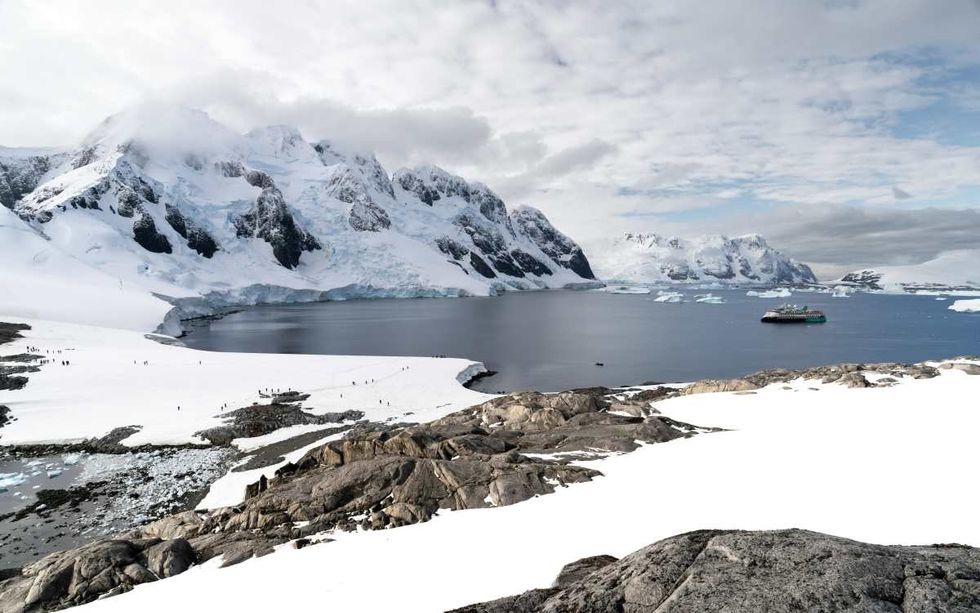Garnets have captivated humans for millennia. Ancient Egyptians adorned their jewelry with garnets, and the Greeks called them "lamp stones," believing they could help see in the dark. Recently, crystallized garnet particles have illuminated a fascinating geological link between Australia and Antarctica, uncovering an ancient Antarctic mountain range now buried under ice. These groundbreaking findings were published in Communications Earth & Environment.
Detrital minerals and sediments in sand can reveal the tectonic history of their locations. For this study, scientists analyzed detrital garnet geochronology to piece together the orogenic events recorded in sediments. Geologists from the University of Adelaide discovered these garnet crystals while exploring Petrel Cove beach in South Australia. “This journey started with questioning why there was so much garnet on the beach at Petrel Cove,” said researcher Jacob Mulder.
Classic detrital minerals and sediments in the sand are known to provide useful information about the tectonic history of the place where they were found. So, for this research, scientists determined detrital garnet geochronology to reconstruct the orogenic events from the sedimentary record. These garnet crystals were discovered when some geologists from the University of Adelaide combed through the Petrel Cove beach of South Australia. “This journey started with questioning why there was so much garnet on the beach at Petrel Cove,” said Jacob Mulder, who was one of the researchers on the team.

While Australia is well known for its pink lakes, pink wildflowers, and pink desert roses, the pink sand blanketing the beach stirred researchers’ curiosity. They wondered what could be the source of these garnet crystals. Most garnets are formed when a sedimentary rock with high aluminum content, such as shale, is metamorphosed, subject to heat and pressure. The high heat and pressure break the chemical bonds in the rocks and cause minerals to recrystallize, according to Geoscience Australia. Garnet is typically destroyed through prolonged exposure to the marine environment. So when geologists found garnet in the pink sands of Australia, they concluded that it did not originate from a local source of rocks. They proposed in the study that it probably had traveled from some nearby source.

The research, led by PhD scholar Sharmaine Verhaert and Associate Professor Stijn Glorie, employed a new, cutting-edge method to show the garnet grains found were around 590 million years old. According to the research paper, over 550 individual detrital garnet grains from modern beaches and Permo-Carboniferous strata in South Australia were analyzed using the recently established, high-throughput laser-ablation Lu-Hf dating method. Called “lutetium-hafnium dating,” the method uses a laser system attached to a mass spectrometer to determine the age of the particles.
These garnet grains were separated from four modern beach sand samples and two samples of the Permo-Carboniferous glaciogenic Cape Jervis Formation, the latter forming part of the Troubridge Basin that once covered large parts of southern Australia. They also established garnet’s ages from local bedrock units.

From the previous studies, garnet was known to have formed mainly resulting from two events. One of these events was Delamerian orogeny, the event that created the Adelaide Fold Belt around 490 to 514 million years ago. The second event was the formation of Gawler Craton in western South Australia around 1.4 to 3.3 billion years ago. Interestingly, the age of the garnet found on the South Australian beach didn’t match any of these timescales.

“The garnet is too young to have come from the Gawler Craton and too old to have come from the eroding Adelaide Fold Belt,” said Verhaert, adding, “Garnet requires high temperatures to form and is usually associated with the formation of large mountain belts, and this was a time when the South Australian crust was comparatively cool and non-mountainous.”
Further investigation of ice sheets and ice flows revealed that the garnet-rich glacial sands were washed over this beach by a north-west moving ice sheet when Australia and Antarctica were connected in supercontinent Gondwana. Around 85 million years ago, the supercontinent started splitting into two. This was mostly due to mantle plumes and other tectonic activity, per the Australian Antarctic Program.
When the garnet discovered was dated using tech equipment, its age turned out to be from the same period as the outcrop of the Transantarctic Mountains in East Antarctica, a region of uplifted rocks capped entirely by thick ice sheets for millions of years. Researchers hypothesized that this area hosts evidence of a 590-million-year-old mountain belt hiding below the Antarctic ice. “While it is currently not possible to sample directly under this ice sheet, it is conceivable that millions of years of ice transport eroded the bedrock underneath and transported this cargo of garnet north-westwards, towards the conjugate Antarctic-Australian margin,” said Glorie.

He added that the garnet deposits then got locally stored in the glacial sediments until erosion liberated them, and the waves and tides hauled them on the South Australian beach, painting the white sand with a blush of pink. “It is fascinating to think we were able to trace tiny grains of sand on a beach in Australia to a previously undiscovered mountain belt under the Antarctic ice,” the researchers said.



















 Garbage scows bring solid waste for landfill.
Garbage scows bring solid waste for landfill. Freshkills Park with the Manhattan skyline behind.Author H.L.I.T.
Freshkills Park with the Manhattan skyline behind.Author H.L.I.T. Honey Bee Covered in PollenPhoto from Canva by Sidersphoto
Honey Bee Covered in PollenPhoto from Canva by Sidersphoto
 deep drop camera, fantastic pit, cave exploration, Georgia, exploringRepresentative Image Source: Pexels | francesco ungaro
deep drop camera, fantastic pit, cave exploration, Georgia, exploringRepresentative Image Source: Pexels | francesco ungaro deep drop camera, fantastic pit, cave exploration, GeorgiaRepresentative Image Source: Pexels | parfait fongang
deep drop camera, fantastic pit, cave exploration, GeorgiaRepresentative Image Source: Pexels | parfait fongang Image Source: YouTube |
Image Source: YouTube |  Image Source: YouTube |
Image Source: YouTube |  Image Source: YouTube |
Image Source: YouTube | 

 Representative Image Source: Pexels | Anni Roenkae
Representative Image Source: Pexels | Anni Roenkae Representative Image Source: Pexels | Its MSVR
Representative Image Source: Pexels | Its MSVR Representative Image Source: Pexels | Lucian Photography
Representative Image Source: Pexels | Lucian Photography

 Representative Image Source: Pexels | francesco ungaro
Representative Image Source: Pexels | francesco ungaro
 Representative Image Source: Pexels | Hugo Sykes
Representative Image Source: Pexels | Hugo Sykes Representative Image Source: Sectional view of the Earth, showing central fire and underground canals linked to oceans, 1665. From Mundus Subterraneous by Athanasius Kircher. (Photo by Oxford Science Archive/Print Collector/Getty Images)
Representative Image Source: Sectional view of the Earth, showing central fire and underground canals linked to oceans, 1665. From Mundus Subterraneous by Athanasius Kircher. (Photo by Oxford Science Archive/Print Collector/Getty Images) Representative Image Source: Pexels | NASA
Representative Image Source: Pexels | NASA